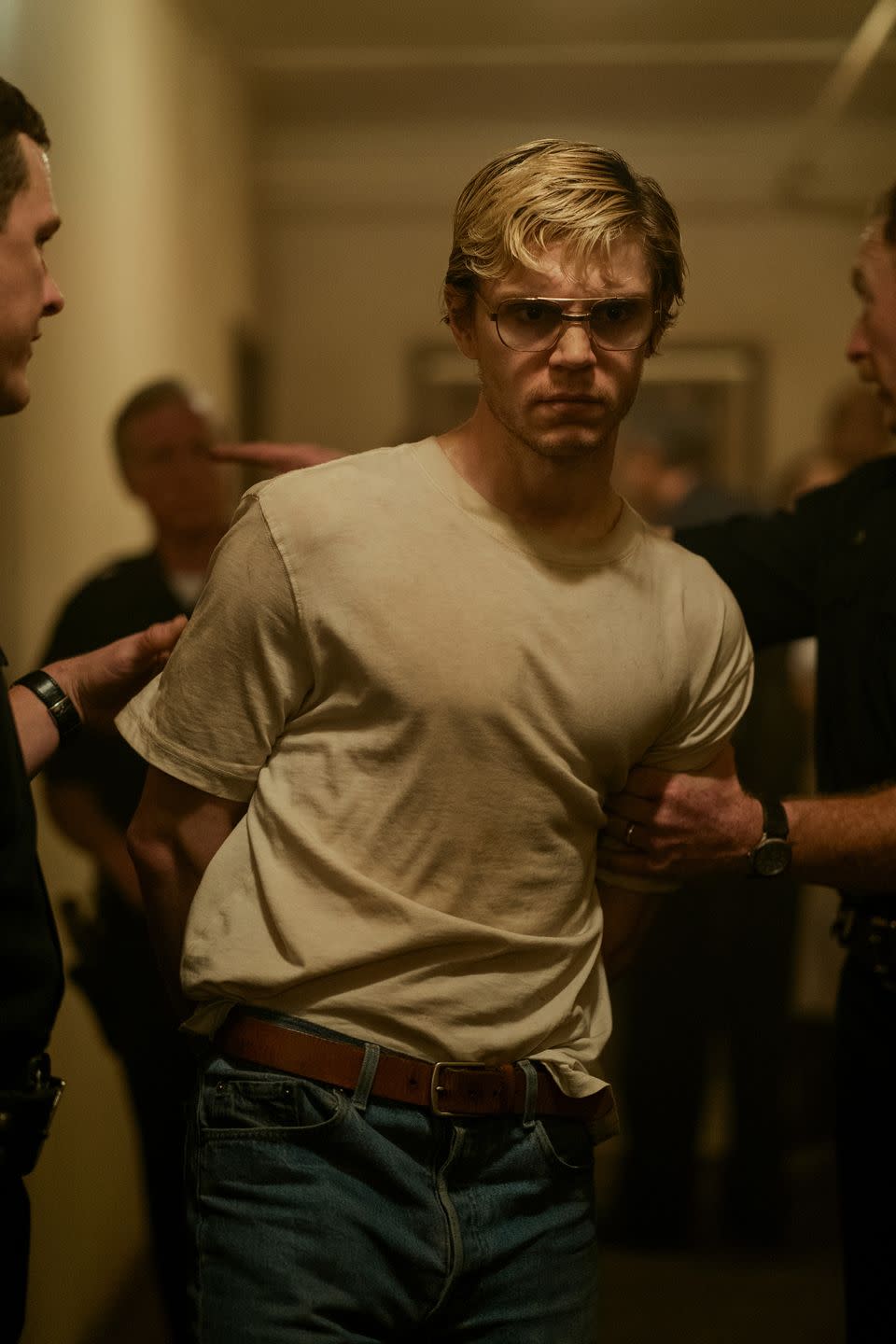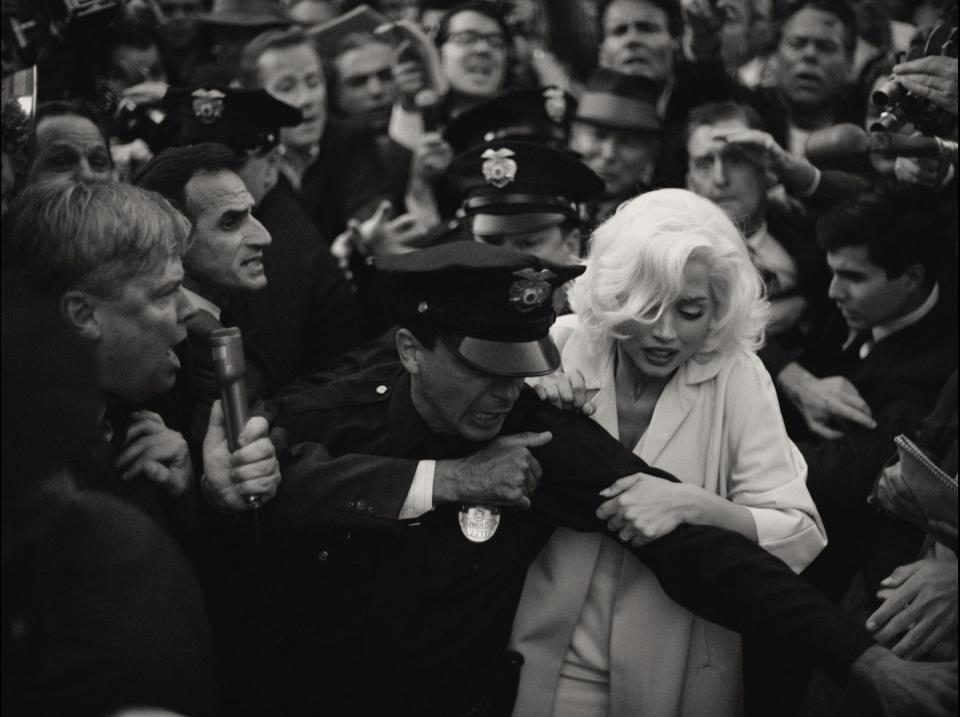Is the backlash to The Jeffrey Dahmer Story the beginning of the end for true crime?

I am not afraid to say that I'm a cliché. I fall asleep to podcasts about scams and cons, my evening downtime is often spent watching some hyper-graphic murder and police investigation show, and when a new crime thriller hits the shelves I read it dutifully (alcoholic-detective-estranged-from-their-family not always, but very often, included). So, when Netflix announced it was releasing a series centered around the life and crimes of notorious serial killer Jeffrey Dahmer, I was sold. We all were. MONSTER Dahmer: The Jeffrey Dahmer Story had all the markers of everything you could want from your Tuesday evening true-crime binge: a star like Evan Peters in the lead role, a big name producer like Ryan Murphy at the helm, a Netflix-sized budget behind the scenes and a long list of truly heinous crimes ready for dramatisation. There really isn’t a box that Dahmer doesn’t tick, right?
As you probably know by now Jeffrey Dahmer, nicknamed the ‘Milwaukee Cannibal’ was one of America’s most notorious serial killers, who murdered and dismembered 17 boys and men between 1978 and 1991. His murders involved necrophilia, cannibalism and the permanent preservation of body parts. The series, while clearly using artistic license, doesn’t sit too far from the truth of the crimes he committed. The sheer gruesomeness of what Dahmer did is what sent him straight to the true crime entertainment mob. We’ve had the ‘Bundy Binge’ era, now it seems like we’re moving swiftly into ‘Dahmer Mania’.

This strange cultural obsessiveness is a fairly standard part of the weird combination of crime and zeitgeist. Through our screens, these hideous acts of violence and cruelty simply become competitions in audacity. We watch with the expectation that each series will be more hideous than the last, each killer worse than the last. And in turn, we’ll guzzle more and more of the little horrifying details that make every subsequent iteration of the genre more extreme.
The problem, clearly, is that these are not simply stories. Those 17 men had families and friends. These people exist and existed in real life. We know this. It's a true story. So why do we keep watching when the show forces the victims' families to suffer their trauma over and over again?
Perhaps it’s something we’ve known all along, but never really confronted. But now we're not allowed to turn a blind eye. In this case, some of the families of Dahmer’s victims have spoken out about the show directly. Explaining, not only how the show has forced them to relive their trauma in a very visceral way, but also that they were not contacted by Netflix ahead of the series' release.
Rita Isbell, sister of Errol Lindsey who was murdered by Dahmer in 1991, wrote a personal essay about the horror of seeing her victim impact statement reenacted during one of The Jeffrey Dahmer Story's courtroom scenes. She says she wasn’t contacted by Netflix, and along with other members of her family has spoken out against the use of their trauma for entertainment.
"The episode with me was the only part I saw,” she told Insider. "I didn't watch the whole show. I don't need to watch it. I lived it. I know exactly what happened."
Perhaps not insignificantly, Dahmer isn’t the only project on screens right now to be accused of being exploitative. Blonde, the long-awaited Marilyn Munroe biopic is facing huge criticism for what many see as a plainly misogynistic and abusive account of a few select aspects of her life, heavily dramatised to ignore the good that she did and any sense of autonomy she had.

Then there's Inventing Anna, a true-crime-story-turned-drama, which has resulted in a lawsuit slapped against Netflix, after one of the real life people insisted her portrayal was damaging.
And yet, while Blonde quickly shot to Netflix’s no.1 spot upon release, Dahmer too did the same, and was watched for more than 196 million hours in its first week. It’s Netflix’s biggest launch since records began in June 2021. So, can we blame the streamers for continuing to make these films and shows if we’re so consistently tuning in to watch them?
Sure, it takes two to tango. But isn't it about time production houses and streaming services were questioned on the way they handle these topics? Shouldn't we make it key that TV no longer relies on trauma porn, or profiting from people's pain? Many have suggested contacting the families to tell a more victim-focussed version of the story, giving some profits to charities or foundations launched in the victims’ names.
So when they say they’re doing this “with respect to the victims” or “honoring the dignity of the families”, no one contacts them. My cousins wake up every few months at this point with a bunch of calls and messages and they know there’s another Dahmer show. It’s cruel.
— eric perry. (@ericthulhu) September 23, 2022
As viewers, that means engaging with and amplifying the voices of those who are asking to be heard, but it also means appraising what you’re watching and more importantly, why.
Earlier this week, as my finger hovered over Blonde in Netflix’s trending column, I did that mini appraisal, and realised that I was only considering watching it in the most macabre of ways. If I was being completely honest with myself, I had no legitimate desire to watch it. Instead, I was caught up in the scandal of it all. I wanted to ogle at the car crash, get a glimpse of the crime scene, see just how grotesque the whole thing could be, none of which are good enough reasons to give power to something so damaging.
If the driving force behind watching a show is sheer voyeurism and sinister curiosity perhaps it’s time we start asking ourselves if that alone justifies perpetuating the exploitation cycle. Sure, the streamers need to be asking the same questions of their content, but if attention is currency in the entertainment world, maybe we should think a little harder before we commit our valuable time to something that gives us even the slightest glimmer of ick.
You Might Also Like

 Yahoo Finance
Yahoo Finance 